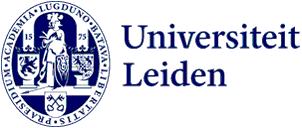
One step closer to understanding planet-formation: Julia Santos refutes a 20 year standing paradigm
How do atoms and molecules end up forming planets? That's what astrochemist Julia Santos studied during her PhD. She discovered the dominant process behind the formation of methanol in space – a finding that surprised the entire field.
‘I try to understand chemistry in space,’ says Santos about her research. ‘When we think of a planet, we picture it as a core with a mantle, surface and atmosphere. To form these elements, you need the right mix of atoms. I want to understand how these ingredients are distributed in the universe. Is it different around other stars or was Earth just lucky with the present ingredients?’
Understanding the chemistry in planetary nurseries
When a star is born, it is surrounded by an immense, swirling cloud of gas and dust. This is the material from which planets, moons, and asteroids are ultimately formed. But the chemical path from dust to planet is not exactly known. Santos shed some light on the first steps in this process.
‘How do molecules become more complex? How are they formed and destroyed? Are they in the gas phase or solid? Those are the questions I want to answer,’ explains Santos excitedly. ‘In my PhD, I focused on dust grains—and the ices that form on them— because they create a fertile environment where chemistry thrives.’

Simulating space in a lab setup
Santos mostly did lab experiments to study these questions. ‘In the solar system, you might be able to send a probe to a comet. But further away? That's simply impossible,’ she says. ‘Therefore, we simulate interstellar space on Earth in an experimental setup with extremely low temperature and pressure.’ The PhD candidate pursued many avenues, from laboratory experiments to chemical studies and observational programs. She smiles: ‘I need that to stay motivated. Although hands-on experiments are especially gratifying.
Debunking a 20 year old paradigm
Already during her Master's, Santos wrote several refereed papers, including two as first author. But her main accomplishment was during her PhD. ‘I studied a lot of different chemical reactions. The main one was the formation of methanol. This is a simple molecule but in space we consider it complex,’ she explains. ‘It is the protagonist in the story of astrochemistry. The basic ingredient needed for many other organic molecules.’
‘Astrochemistry encompasses geology, engineering, astronomy, and chemistry. And Leiden has it all.’
The paradigm of how methanol is formed was established 20 years ago and has been accepted by the field ever since. Until Santos published her work. 'I confirmed that there is another mechanism that is more important,’ she says. ‘We published this in 2022 and since then, observations and models have already supported it. That is the only empirical evidence we have in astronomy, so that was really cool!’
A vibrant hub for astrochemistry in Leiden
The lab and the community in Leiden are very special, according to Santos. ‘We are lucky to have facilities and expertise that you don't find everywhere. Astrochemistry is very multidisciplinary. It encompasses geology, engineering, astronomy, and chemistry. And Leiden has it all. That was very helpful and enriching.’
She also faced serious challenges. ‘My promotor Harold Linnartz passed away unexpectedly. That was a difficult time,’ she says. ‘And right after, we had to move the lab to the Gorlaeus Building. So I couldn't do experiments for a substantial part of my PhD. Luckily, Ewine van Dishoeck was very welcoming and took me into her group.
Santos continues her research at Harvard University with the prestigious 51 Pegasi b Fellowship.
